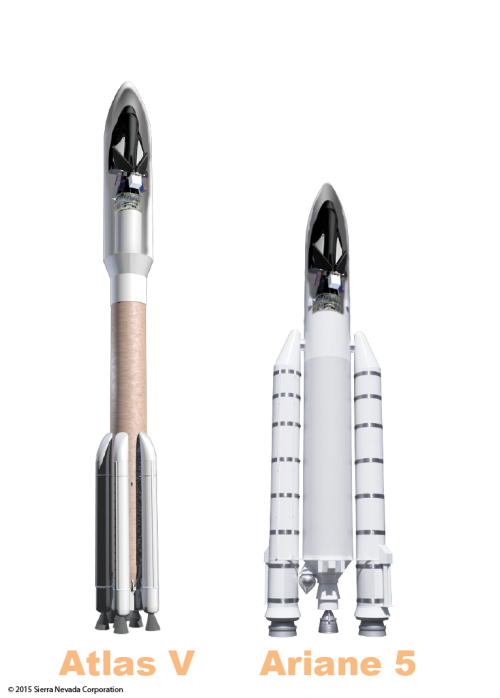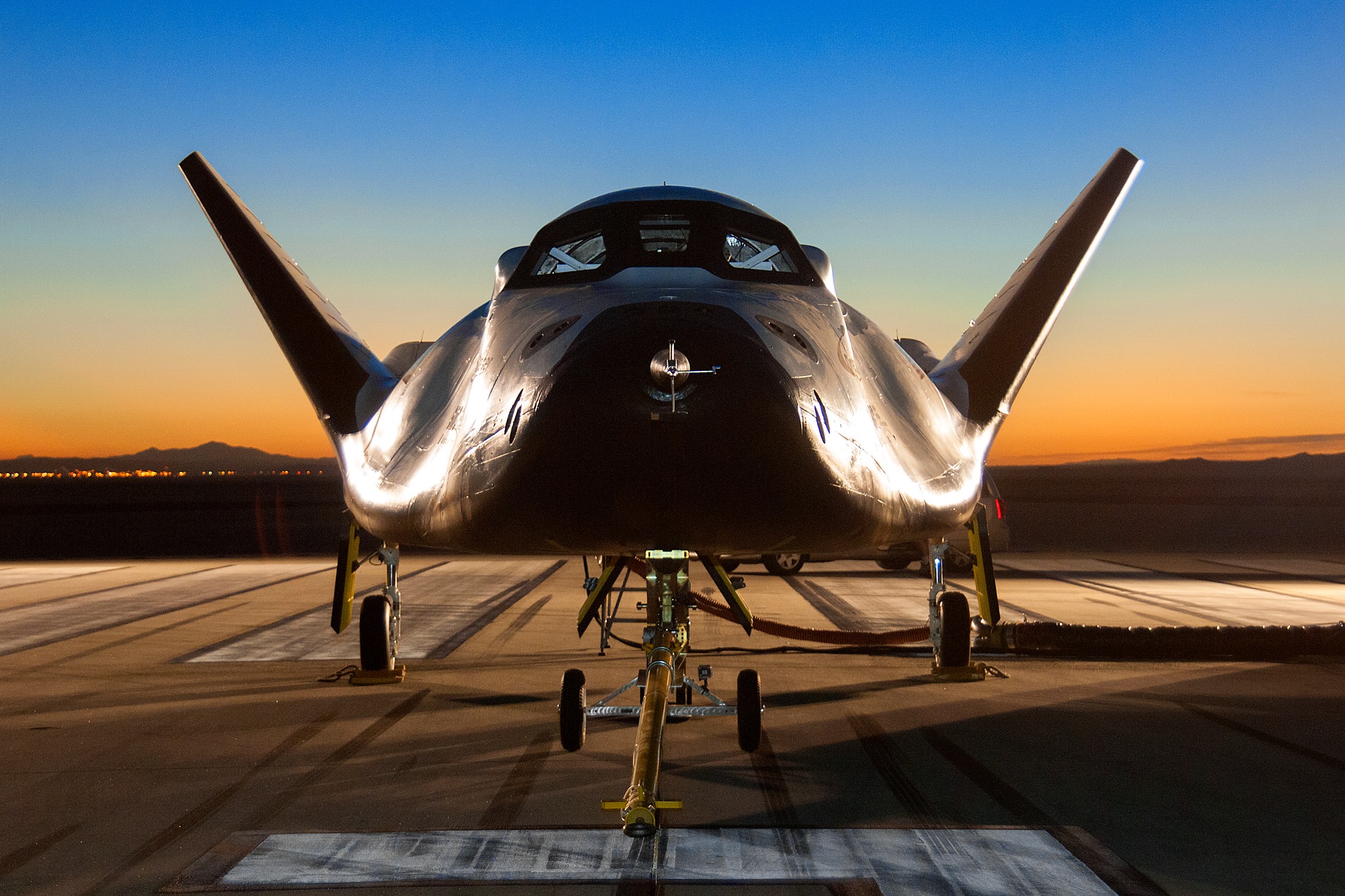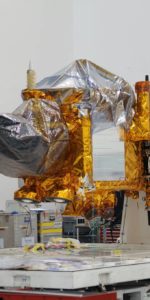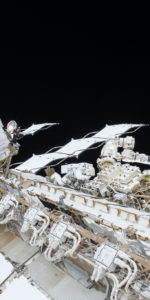
Yesterday, NASA announced the winners of their multi-billion dollar second round of Commercial Resupply Services (CRS) contracts to resupply the International Space Station (ISS) from 2019 through 2024. SpaceX secured a contract with their Falcon-9 and Dragon systems, and Orbital ATK secured a contract with their Cygnus spacecraft, flying atop their own Antares rocket and ULA’s Atlas-V. And Sierra Nevada Corporation (SNC), who was not selected by NASA when they awarded SpaceX and Boeing big commercial crew contracts, was awarded a cargo contract too, allowing for the dream of their Dream Chaser spaceplane to now become a reality.
In the time since losing the crew contract SNC has been relatively quiet about Dream Chaser development, but they have been busy ever since continuing to upgrade their flight test article, developing a second flight test series for it, speaking with other government space agencies and private companies to find a market for Dream Chaser without NASA funding (read our 1-on-1 interview with SNC regarding an international Dream Chaser HERE), and building the structure of their first operational orbital vehicle (thanks to Lockheed Martin).

This morning, SNC held a press conference to update the development of their Dream Chaser program, and outlined some details concerning the CRS-2 contract and how Dream Chaser will operate on those ISS resupply missions.
“The SNC team is readying the test article in order to arrive at NASA’s Armstrong Flight Research Center (Edwards AFB, Ca) early this year to begin its second flight test program (no dates given), and our strategic partner, Lockheed Martin, is leveraging best practices in tooling and composites to manufacture the first orbital Dream Chaser spacecraft,” said Mark Sirangelo, corporate vice president, SNC’s Space Systems. “Both efforts have been ongoing simultaneously and we are very pleased with the progress to date.”
SNC put their test article through its first free flight Approach and Landing test, or ALT-1, at Armstrong two years ago, and the test went about as good as SNC could have hoped for, until it came time to land. When the command was given to deploy its landing gear, only two of its three gear deployed, causing the vehicle to skid off the runway and sustain minor structural damage. The problem was blamed on a mechanical issue with the specific landing gear, rather than something related to bad software (none of the primary systems that gave the commands that control the flight failed or had any problems).
“The 99% of the flight that we really wanted to get – which was does this vehicle fly, is it able to be controlled, does the software work, can we autonomously fly the vehicle in to approach and land on a runway – all that was 100% successful,” said Sirangelo. “In fact, we probably performed better than the original test standards were meant to be.”
SNC says they have made significant structural and systems improvements to that test article, including the composite wings and aeroshells, and invested heavily in maturing the vehicle’s orbital avionics, guidance navigation and control, the flight software, and employed a number of new processes, all of which will be used on the orbital vehicle as well. Finally, the advanced orbital Thermal Protection System (TPS) was installed on the ETA skid in order to do advanced testing of the actual orbital TPS.
SNC hopes to get everything they need out of one free flight ALT test, but they will fly more if needed.
One of the significant upgrades is that the test article will conduct its flight test(s) with orbital avionics software this time, the same which the autonomous Dream Chaser CRS-2 cargo variant will use on its missions to and from the ISS. In doing so, SNC will earn direct certification credit out of the upcoming flight test series from NASA, therefore eliminating the need for an orbital flight test before operational CRS-2 missions.
Dream Chaser development will follow the example of Space Shuttle Columbia, STS-1. All the testing and certifications will happen on the ground and within the atmosphere, the first Dream Chaser launch will be an operational mission for NASA under the CRS-2 contract to the ISS. SNC will benefit from 135 shuttle flights & modern testing techniques to ready Dream Chaser for that first mission, and the company says Dream Chaser will be ready for that flight atop a ULA Atlas-V rocket from Cape Canaveral, Fla. in the first half of 2019.
NASA does not require a first orbital flight test for the Dream Chaser cargo version before its first operational CRS-2 flight.
VIDEO: Dream Chaser Cargo-Version in Action
SNC and NASA will be working together over the coming weeks and months to determine launch dates for their CRS-2 flights.
When the first Dream Chaser arrives in Florida, it will be processed at the Kennedy Space Center (KSC) Operations and Checkout Building (O&C), and will then be transported to nearby Launch Complex-41 on Cape Canaveral AFS for integration atop its Atlas-V, then launch. It also has the capability to dock or berth to the ISS, based on the cargo onboard and customer’s wishes (NASA). For berthing missions the vehicle will utilize a grapple fixture, and robotic trajectory analysis has already been done to ensure it would work.
The spacecraft can remain at the ISS for over 200 days, if needed, before having to leave back for Earth. KSC’s Shuttle Landing Facility (SLF) will serve as the primary landing location, for obvious reasons (next to launch site and processing facilities). However, the vehicle is capable of landing on really any runway at least 8,000 feet long, anywhere around the world, without requiring specialized equipment, and SNC has been looking into landing at commercial airports for some time, having launched their “Dream Chaser-Preferred Landing Site Program” program to work with spaceports and commercial airports to become designated landing sites for Dream Chaser.
With a propulsion system fueled by Nitrous Oxide and propane this also means immediate access to the spacecraft after landing, with only 10-20 minutes needed to exit the runway and keep conflicts with other aircraft using the same area to a minimum. For a nominal (planned) landing this might not mean much, but in an emergency abort (unplanned) scenario such quick access to Dream Chaser would allow other airport operations to proceed with minimal or no impact from the spacecraft’s unexpected arrival.
Dream Chaser would usually take 4-6 hours from ISS departure to touchdown, however SNC stated that time could be narrowed to 2 hours, if needed in the event of an emergency.
Once back on the ground the vehicle will go back to the O&C, get looked over, and be readied for its next flight. Turnaround time between landing and next launch would be around 60 days, however there are a lot of other factors that go into turnaround times, such as whether or not the rocket is even ready. The Dream Chaser itself, noted SNC, could be turned around in much less than 60 days, implying a flight rate annually of 4-6 missions per vehicle.

The vehicle is small enough that it can be loaded on a small cargo plane to return to KSC as well, in the event it lands someplace besides the SLF, which future commercial missions may in fact require if the customer is located elsewhere in the country and wants their payload ASAP. Missions & clients will determine other landing sites in the future.
Another important note, even though the Dream Chaser cargo-version is different from the crew-version, they both share 85% commonality. Subsystems not needed for crew are off the cargo version obviously, but the cargo-version can actually be made crew ready if NASA needed the capability, for whatever reason.
If NASA opens up another round of Commercial Crew contracts in 2020, SNC will put in a bid for their crew-version Dream Chaser.
Once the cargo-version establishes itself as a dependable, reusable, and cost-effective space system SNC expects demand for the crewed-version to increase, taking lessons learned from the cargo-version and applying them to the crew. The six missions SNC is guaranteed from NASA under CRS-2 is also enough funding to keep the cargo-version ready to fly for other customers if needed, according to SNC.
“SNC is honored to be selected by NASA for this critical U.S. program,” said Eren Ozmen, president of Sierra Nevada Corporation. “In such a major competition, we are truly humbled by the show of confidence in SNC and look forward to successfully demonstrating the extensive capabilities of the Dream Chaser spacecraft to the world. While Dream Chaser is still undergoing development and testing, the company is committed to achieving its first launch, well before the CRS-2 contract begins.”
.
Be sure to “Like” AmericaSpace on Facebook and follow us on Twitter: @AmericaSpace
.






This is fantastic. So glad DC gets to fly after all. Hopefully this will, one way or another, lead to the crewed version being developed and flown.
Will NASA require a new vehicle every flight as they do with Dragon? By the time this program kicks in, SpaceX should have 10 or 12 used Dragons in the warehouse if my math is correct. Seems a shame not to re-use those as well as the first stage.
Look for some of those to fly food and water to Bigelow stations in a couple years.
I want to see a scaled up HL-42 version of this atop Falcon Heavy
Space X WILL reuse their vehicles after refurbishment. Right now the focus is on the booster landing at sea and the Falcon Heavy to be flown sometime in mid-year 2016. The cargo version is going to be…along with the crewed version to land by rockets at the Kennedy Space Center for reuse….
Jake: I have no doubt SpaceX will re-use their Dragons at some point. Their current contract with NASA however requires a new vehicle for every cargo flight. My question was if that requirement still holds in the CRS-2 contract. While I’m excited about SNC winning a contract, if they get to re-use their vehicle it seems a little unfair. I understand a water landing puts different strains on a capsule, but…
Oh my goodness! Incredible article dude! Thanks, However I am going through issues with your RSS. I don’t understand the reason why I am unable to subscribe to it. Is there anybody getting the same RSS issues? Anyone who knows the solution will you kindly respond? Thanks!!